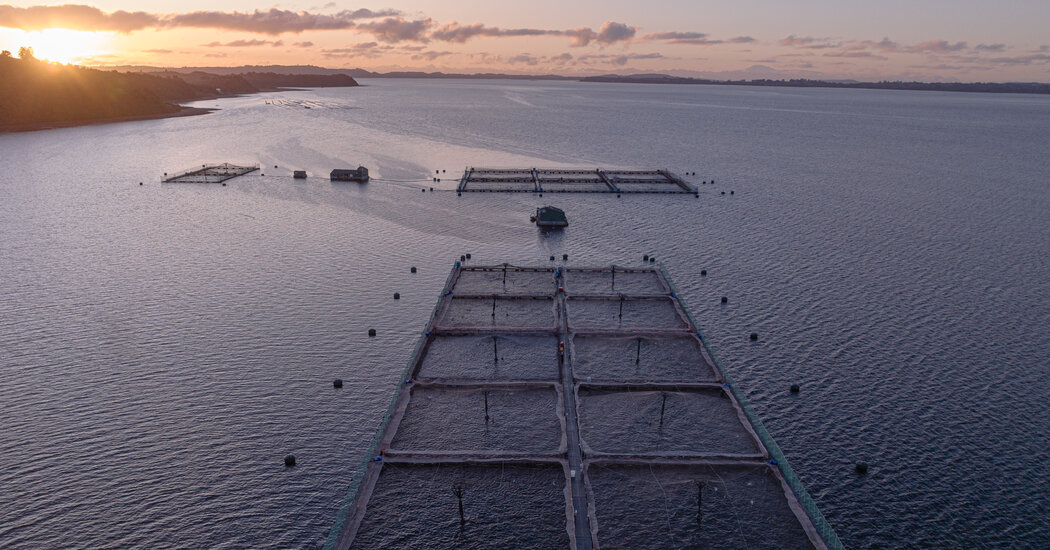The sea is calm as dusk descends on Tarsicio Antezana’s home island of Quinchao in southern Chile. In the distance, snow-capped volcanoes turn a deep violet with the setting sun.
It’s a serene sight — except for the one thing Mr. Antezana, a retired oceanographer, cannot ignore. Not far out in the water, a strip of small, rectangular objects stretches across the sea, swaying ever so slightly with the tide. These structures might not seem like much, but Mr. Antezana knows what lies beneath the surface: a salmon farm.
Below the water, high-density net cages teem with thousands of salmon. Farms like this one are common in Los Lagos, the primary aquaculture region in Chile. The South American country is the top exporter of farmed salmon to the United States. But the popular fish are not native to this place, and many environmentalists and activists have long complained that the farms are damaging Chilean ecosystems and threatening native wildlife.
Large-scale salmon farming began in Chile in the 1970s. A young scientist at the time, Mr. Antezana was asked to evaluate the viability of farming the fish. He advised the government to establish base-line studies and to be wary of ecological and health risks.
For more than four decades, Mr. Antezana has watched the industry grow into one of the world’s leading producers of farmed salmon. Last year, farmed salmon was Chile’s second-largest export, generating $6.5 billion in revenue.
It’s an economic success story in which U.S. consumers play a leading role, eating more Chilean salmon than ever before; 2022 was a record year, according to the U.S. Department of Agriculture. Most of the farmed salmon eaten in the United States comes from overseas, with almost half from the fjords of Chile.
